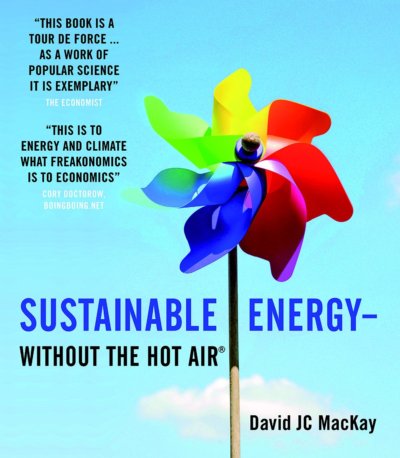A 21st Century Energy Policy, Part 3: The Technology of the Future
I have written a series of four articles discussing Britain’s energy policy for the left-wing Labour-supporting website Left Futures. In Part 1 I explain the limits of renewable energy sources. Part 2 advocates for the role of nuclear power in an energy transition. Various technologies which should be used and policies which should be enacted in order to improve energy efficiency and electrify heat and transport are discussed in Part 3. Finally, Part 4 proposes an ownership framework capable of building the electricity infrastructure needed.
If humanity is to have any hope of avoiding catastrophic climate change, developed countries must take aggressive steps to decarbonise as quickly as possible. This will mean not only replacing existing fossil-fuel power plants, but greatly expanding all electricity production to replace gas and petrol. Such a task demands not just an energy policy, but a comprehensive economic plan.
For reasons discussed in Part 1, decarbonisation is not achievable using only renewable sources. Investments should certainly be made in wind, and (where feasible) hydroelectric, tidal, and geothermal power, but even combined these are unlikely to provide more than half of the current supply. The remainder must be made up by nuclear power. This is broadly in line with what energy analyst David MacKay proposed as “Plan E” in his book Sustainable Energy—Without the Hot Air. This was the plan which he deemed to be the most economical of those he proposed.

To improve cost effectiveness, new nuclear reactors should be built to a standard design, perhaps initially an established one with known costs; the spiralling costs at Hinkley C (which should probably be cancelled) show what can happen when a new and untested design is used. Such a strategy is similar to the mass build-out of nuclear reactors in France during the 1970s and 80s. Unfortunately, Britain today lacks the capacity for state-directed economic development which France had at that time. Steps to regain it will be discussed in Part 4.
According to statistics provided by the Department of Business, Energy, and Industrial Strategy, currently electricity makes up about 20% of Britain’s energy usage, while gas accounts for about 30% and petroleum products for almost all of the rest. Gas and petrol will need to be phased out, as they can not be decarbonised. When faced with these numbers, the scale of the task ahead becomes apparent; not only must the majority of the existing electricity supply be replaced, but it must be expanded several times over. Fortunately, there is much which can be done to improve efficiency, somewhat reducing the amount of new capacity needed.
Measures such as insulation could realistically result in a reduction of 15% in energy used for heating existing buildings by 2030. Obviously, new buildings should be required to meet high efficiency standards. Old and inefficient boilers could be replaced, although the phasing out of gas might mean that this is not worthwhile. The question then emerges as to how to achieve the upgrading of old buildings. The Green Party has, in the past, proposed that households should simply be given the insulation for free. However, this amounts to little more than a gift to those well-off enough to own their house or a gift to landlords. The government could offer to finance insulation at a rate where the cost would be covered by savings in gas bills. However, landlords would have to be permitted to increase rents accordingly for this to provide them with an incentive. Further discussion will be needed on this issue.
Various options exist to replace gas for heat and hot water. The simplest would be electric baseboard heating and immersion heating, which are a well-established technologies with cheap up-front costs. The upfront costs for these are relatively cheap, although still significant. In parts of Canada most people rent their water heaters from the power company and a similar option could be pursued here. Note, however, that with the UK’s present electricity supply, this form is heating is actually worse for the environment than gas, so it should only be rolled out after substantial electricity decarbonisation. Heat pumps offer a few times better energy efficiency than conventional electric heating but have very high up-front costs. Mass producing heat pumps, in order to bring down the price, should be one aim of national industrial policy and the government should also offer to finance their installation or allow customers to rent them from the power company. Solar thermal panels can be coupled with these systems to help provide hot water.
In areas with sufficiently high population density, district heating should likely play a substantial role. Where practical, this should use waste heat from power plants. This was done in Westminster with the old Battersea Power Station. A publicly owned electricity company should build such systems around any nuclear or geothermal power plants, possibly in partnership with local authorities. Heat can also be extracted from large bodies of water, sewage, and the ground using heat pumps. The government should offer loans to councils which wish to invest in such projects.
Binding efficiency requirements must be set for consumer and industrial goods and these should be regularly updated. A government program to purchase older white-goods, similar to Obama’s “cash for clunkers” program, could be used to incentivise upgrading to more energy-efficient models. A similar approach could be taken with other goods such a televisions and light-bulbs. Gas ovens and hobs will eventually become obsolete and need to be replaced.
A concerted effort should be made to shift people out of cars and onto public transit. One step in this direction would be free public transit. Congestion charges, pedestrian zones, road tolls, and reduced speed limits can all be used to discourage car use. Cycling routes and infrastructure should be improved. 100% electrification should be a goal for railways and some of the routes closed under the Beeching Axe of the 1960s should be considered for reopening. The current bus fleet should be gradually replaced by trolleys, trolley-buses, and battery-powered buses. This will be more difficult for long-distance buses, as batteries have limited range and it may be impractical to run wires over the long stretches of highway. To the extent that private vehicles continue to be used, they will have to be electric and government action will be needed to develop the charging infrastructure. Long-distance freight should increasingly be transported by rail and local freight by electric trucks.
Long distance travel by air or sea is more difficult as there are no nearby electrical wires to power it. The energy density of batteries is only a few percent of diesel or jet fuel, making it impossible to fit enough of them on a ship or plane to power a voyage. Alternatives such as biofuels or hydrogen are still decades away and, in the case of the former, there are concerns about them displacing essential food production. In the meantime, rail should start to replace short-haul aviation, particularly for domestic flights. Various incremental improvements can be made to reduce energy use by planes. Research into alternatives to jet fuel should be continued and expanded. Shipping remains quite energy efficient and thus is not an initial priority for decarbonisation but, in addition to developing biofuels, the government could look to develop nuclear powered freighters similar to the nuclear powered aircraft carriers, submarines, and ice breakers which already exist. Some of the same safety measures could be used as when transporting nuclear waste by ship.

As a final note, there are also various non-energy related sources of greenhouse gases. Particular culprits are agriculture and the manufacture of steel and cement. These issues are beyond the scope of these articles, but it should be noted that they are not easy to solve. Furthermore, at present the greenhouse gases emitted in the production of Britain’s imports are almost equal to those of Britain itself. Rebuilding Britain’s manufacturing sector will help with this, but ultimately it represents the need for international action to fight climate change.
As can be seen, the task of moving Britain over to a low-carbon economy is a Herculean one. It will require government intervention on an unprecedented scale. Only a left-wing government, armed with a detailed and carefully worked-out economic plan, can hope to achieve it in an equitable manner.
comments powered by Disqus
